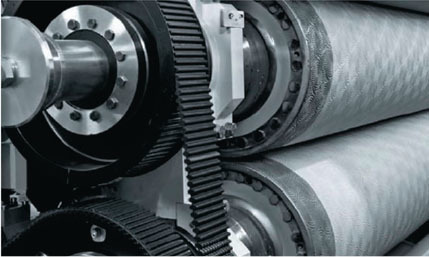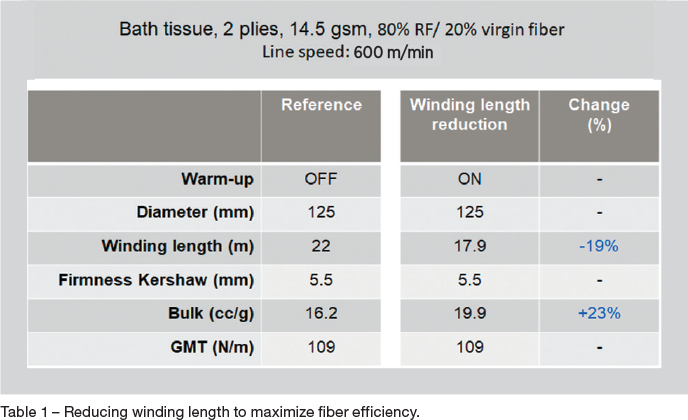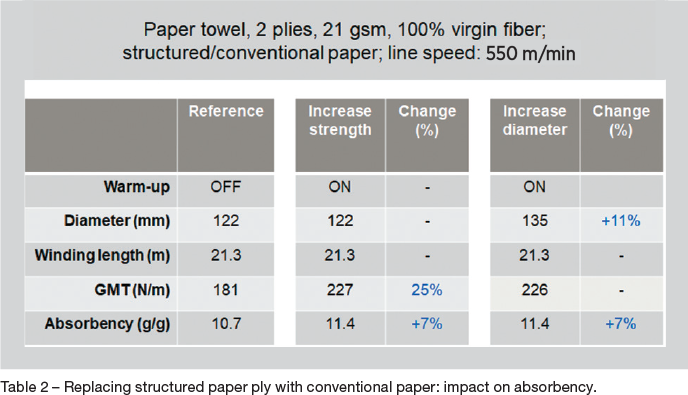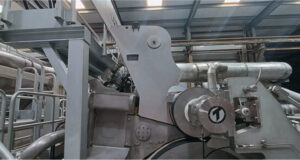Tissue manufacturers seek product differentiation to gain market share, yet all are subject to buying the same pulp, processing it to add value, and then reselling pulp-based tissue products for profit. The largely uniform approach begs the question: Where is the competitive advantage?
TWO APPROACHES TO COMPETITIVE ADVANTAGE
Often the answer lies in offering premium products with new or sought-after features. Product characteristics that differentiate performance and elevate consumers’ perception of value drive price points and margins. There will always be a segment of consumers willing to pay more for premium offerings, especially when it comes to established, popular brands.
However, product premiumization isn’t the only path to competitive advantage. Minimizing the cost of manufacturing provides opportunities to get good products to market at the lowest possible cost, potentially leading to higher margins as compared to competitors. This “design to cost” approach is used by many premium and private label manufacturers because of the control it lends to efficiently and profitably doing more with less.

Warm-up contactless in both steel rolls.
DESIGN TO COST: REDUCING PRODUCTION COSTS
Pulp is the single biggest cost tissue manufacturers incur, and one of the most difficult to manage because of pulp price volatility. The magnitude of fixed costs is directly proportional to the magnitude of pulp costs, making each a key production cost reduction focus area for tissue manufacturers.
Quick wins for reducing pulp cost per roll are using less fiber and/or less expensive fibers, then optimizing the fiber mix by improving bulk or reducing grammage.
To dilute fixed costs, maximizing productivity is essential. Understanding and eliminating equipment, technical, and operational inefficiencies means achieving more good tons produced per machine. Industry statistics state that a 1 percent bath tissue productivity improvement is roughly equivalent to a 1 percent fiber cost savings.
EMBOSSING: HOW TO DO MORE WITH LESS
Being intentional about processing pulp fiber is the basis for efficient cost management, and it also provides opportunities for product differentiation and competitive advantage.
Embossing is a particularly effective solution for impacting the quality of finished rolled tissue products:
- Consumer acceptance: The pattern creates a perception of softness, absorbency, and strength.
- Product differentiation: The pattern design is a visual cue that consumers associate with a particular brand.
- Bulk: Embossing increases sheet thickness, roll size, and a favorable consumer impression of roll size.
- Softness: Embossing decreases web stiffness and increases sheet softness, depending on the pattern design.
- Visual uniformity: Sheet defects such as direct, poor sheet formation, etc., are effectively hidden.
- Change in base sheet properties: Embossing improves tensile strength, stretch, and absorbency.
All of these benefits play into what consumers expect—and are willing to pay more for—when selecting rolled tissue products.
Conventional embossing that mechanically engraves multiple plies of tissue paper using pressure between two embossing rolls proves effective in delivering these key characteristics but hot embossing amplifies results and opportunities for competitive advantage.

HOT EMBOSSING TURNS UP THE HEAT
Elevated temperatures make tissue web deformation more effective, which increases diameter size. It also effectively incorporates the other features customers equate with premium products, helping tissue manufacturers capitalize on the competitive advantage of value-added offerings.
Likewise, hot embossing also helps maximize productivity. It enables fiber replacements, de-sheeting, grammage reduction, and other cost-saving mechanisms that improve margins for tissue manufacturers.
For all of the potential competitive advantages it offers, conventional hot embossing also has some potential detractors since it relies on hot oil or pressurized water to heat each embossing roll in its entirety. The piping networks needed to circulate the heating liquids are expensive and complex; require roll modifications and excessive downtime for installation or changeovers; and can be dangerous to operators and facilities in the event of failure.
While oil and pressurized water hot embossing systems work, long heating and cooldown times and high thermal dissipation contribute to low overall equipment effectiveness (OEE). The systems also limit the ability to efficiently respond to shifts in market demand for certain product differentiators. As a result, tissue manufacturers could miss opportunities and lose competitive advantage.
WARM-UP CONTACTLESS REVOLUTIONIZES HOT EMBOSSING WITH ELECTROMAGNETIC INDUCTION HEATING
Tissue manufacturers have been left to make do with liquid hot embossing systems. However, compromise is no longer an adequate strategy during turbulent times in the industry.
It’s an unenviable position for tissue manufacturers. It’s also the impetus behind the embossing breakthrough developed by Körber Business Area Tissue engineers.
Körber Warm-up Contactless is the first patent-pending hot embossing system to use electromagnetic induction heating—a proven method in other sectors such as automotive, but novel in the tissue industry. Unlike liquid hot embossing systems, induction heating heats the embossing rolls from the outside with no need for physical contact with the rolls themselves. It’s what makes Warm-up Contactless effective in offering tissue manufacturers:
- CAPEX Control: Easy retrofitting on existing embossing units is accomplished in five days or less, without having to replace or modify the existing rolls.
- Efficiency: Shortens roll heating time by up to 70 percent and cooldown by concentrating heat at roll tips instead of the entire roll, resulting in 60 percent less energy consumption.
- Flexibility: Freedom from piping, modified embossing rolls, and internal heating elements mean faster roll and pattern changeovers, and greater opportunities for product mix expansion. The simplicity of the design—its modularity in particular—allows the warmup heating system to be installed in the top and/or bottom embossing roll. This also provides installation opportunities in virtually all embossers, Körber and other OEMs, with minimal/no impact on the production floor.
- Simplicity: Easy, quick installation and operation that’s more efficient than traditional liquid hot embossing systems—no complicated piping and power heater systems to house and maintain.
- Safety: Minimal safety risk due to the elimination of high temperature liquids.
The Warm-up Contactless system design is more streamlined compared to complex and fragmented configurations where paper is first moistened and then dried. Moreover, tissue manufacturers can use less expensive fiber to achieve up to 20 percent greater roll volume.
These benefits and results are impressive in their own right, but real-world applications demonstrate the value of Körber Warm-up Contactless.

REDUCING WINDING LENGTH TO MAXIMIZE FIBER EFFICIENCY
Challenge: Reduce winding length and maintain diameter.
Installation: Warm-up Contactless single (lower steel roll) in LAO facility with line speed of 600 m/min.
Product: 2-ply bath tissue with conventional paper.
Results: (see Table 1).
- Tissue roll weight reduced by 19 percent while maintaining desired diameter and firmness, with no changes in handfeel.
- Embossing roll heated to target temperature in eight minutes, while embossing roll cooldown completed in under 20 minutes.


REPLACING STRUCTURED PAPER PLY WITH CONVENTIONAL PAPER: IMPACT ON ABSORBENCY
Challenge: Line testing to evaluate product absorbency on a paper towel after replacing structured paper ply with conventional paper ply.
Installation: Warm-up Contactless double with line speed of 550 mpm.
Product: 2-ply paper towel (European market); 1 ply structured paper, 1 ply conventional paper.
Results: (see Table 2).
- Commercial line testing demonstrated a 25 percent increase in strength and 7 percent absorbency gain.
- Second test with standard winding length and 11 percent increase in diameter, demonstrated a 7 percent increase in absorbency.
Warm-up Contactless provides every benefit of hot embossing while keeping installation and operation incredibly simple. Plus, it has minimal impact on the overall equipment effectiveness (OEE) of the line.
Körber Warm-up Contactless is yet another example of how Körber Business Area Tissue leans into innovation to help tissue manufacturers consistently control costs, quality, and outcomes.
 Paper 360
Paper 360
